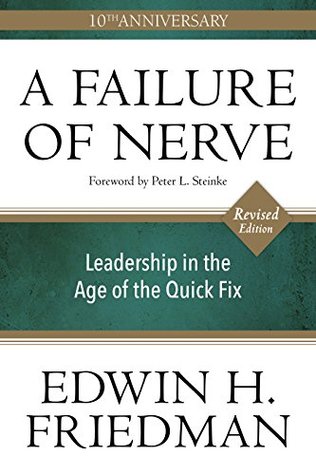More on this book
Community
Kindle Notes & Highlights
Read between
March 28 - April 23, 2025
I mean someone who can be separate while still remaining connected and, therefore, can maintain a modifying, non-anxious, and sometimes challenging presence. I mean someone who can manage his or her own reactivity in response to the automatic reactivity of others and, therefore, be able to take stands at the risk of displeasing.
When families get fixed on their symptoms—abuse, alcoholism, delinquency, marital conflict, or chronic physical illness— rather than on the emotional processes that keep those symptoms chronic, they will recycle their problems perpetually no matter what technical changes they make, how much advice they receive from experts, or how hard they try to understand their symptoms.
The same is the case when an entire society stays focused on the acute symptoms of its chronic anxiety—violence, drugs, crime, ethnic and gender polarization, economic factors such as inflation and unemployment, bureaucratic obstruction, an entangling tax code, and so on—rather than on the emotional processes that promote those symptoms and keep them chronic. In that case, the society will continue to recycle its problems, no matter how much legislation it passes, how it redistributes its resources, how many agencies it creates or dismantles, how many forms it finds for reinventing itself, or
...more
And in some institutions the togetherness forces put such a premium on inclusivity that those who do not agree with making it the overriding principle of the organization are isolated or rejected, thus creating Orwellian “Animal Farms” in which diversity is eliminated in the name of diversity.
In fact, the amount of chronic anxiety in a family is inversely proportional to its capacity for enduring pain. What makes the chronically anxious family’s anxiety chronic is not its pain, but the way it deals with its pain, In fact, the root of the word anxiety means pain, as in angina, anger, anguish, or angst.
The thinking processes that produce a failure of nerve and a quick-fix mentality in contemporary America are the result of a decline in maturity in an anxiously regressed society.
How, then, does one go with the flow and still take the lead? Answer: by positioning oneself in such a way that the natural forces of emotional life carry one in the right direction. The key to that positioning is the leader’s own self-differentiation, by which I mean his or her capacity to be a non-anxious presence, a challenging presence, a well-defined presence, and a paradoxical presence. Differentiation is not about being coercive, manipulative, reactive, pursuing, or invasive; it is about being rooted in the leader’s own sense of self rather than focused on his or her followers.


